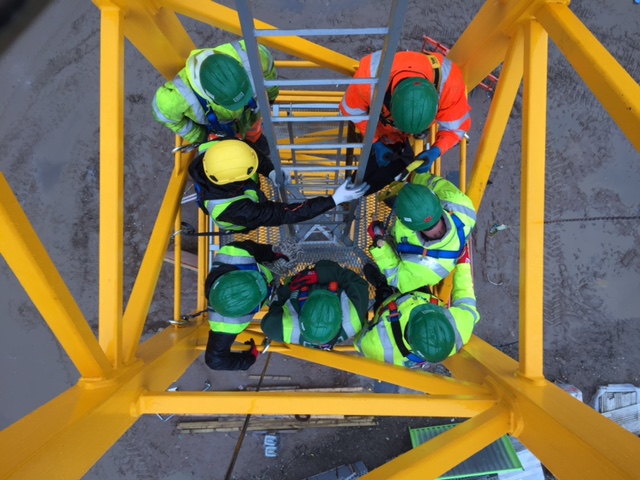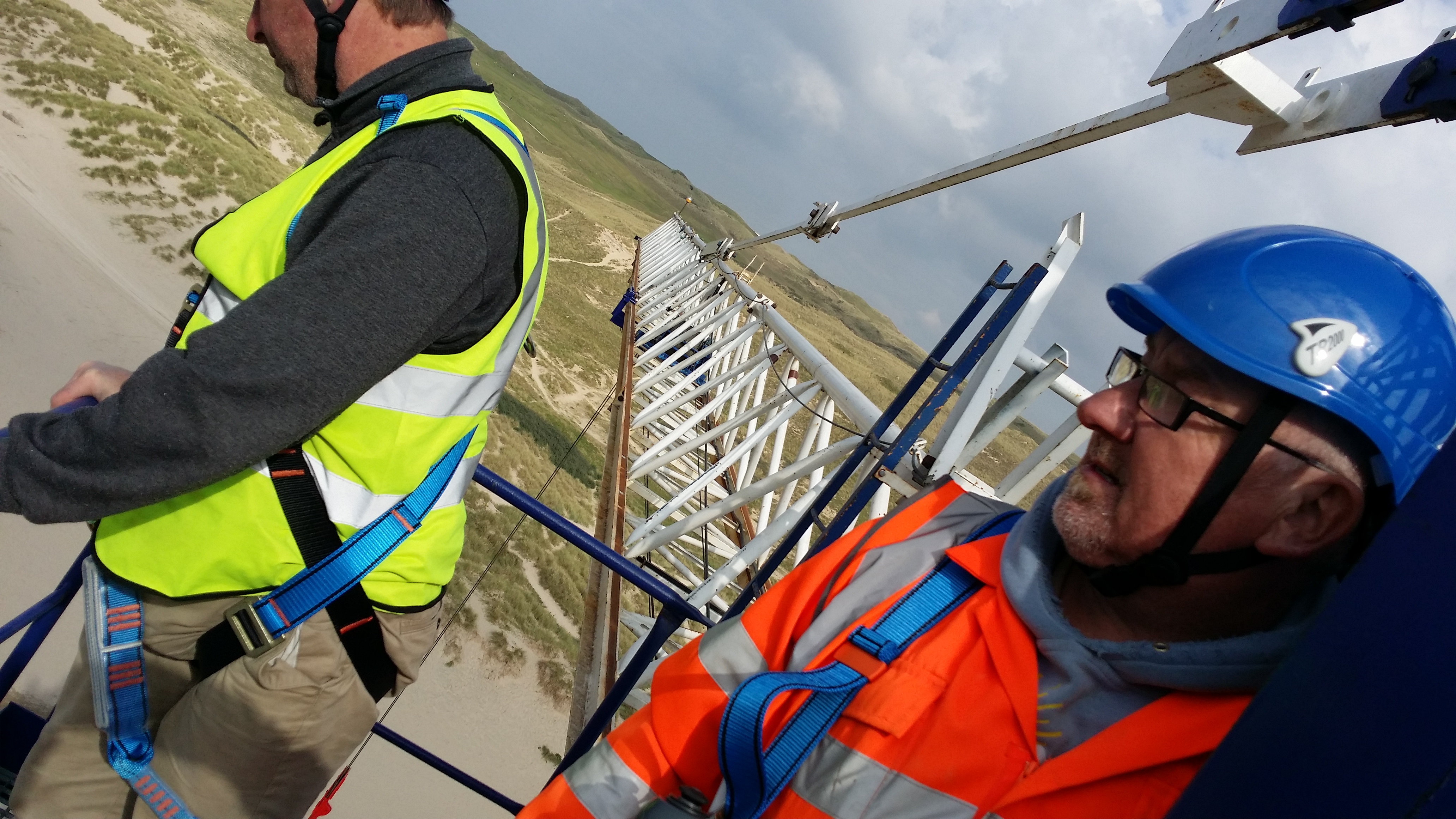Latest News
Preparing to Work at Height
Posted on Thursday, 27th September 2018

Working at height is one of the biggest causes of death and injury in the workplace. The most common accidents are falls from ladders or falling through unstable surfaces.
In this week’s blog, we define working at height, precautions that need to be taken, and what training is available for those who work at height.
What is ‘Working at Height’?
Quite simply, working at height means working in a place where, if precautions were not taken, a person could fall and suffer an injury, or worst case, death.
You are working at height if you are above ground or floor level – the distance doesn’t matter. Working next to an edge, or near an opening where the is a risk of falling is also working at height. Working at height can also occur at ground level. For instance, if you are working next to an opening in the floor or a ground level hole.
Navigating permanent staircases, or a slip or trip at ground level are not working at height as defined by work at height regulations.

Work at Height Regulations 2005
The Work at Height Regulations 2005 applies to all work at height where a risk of fall is present.
The regulations provide guidance and layout duties for employers, plus anyone who controls work at height, such as facility managers or building owners. As part of the Regulations, you must ensure that all work at height is planned and organised properly.
You should carry out a risk assessment on each working at height scenario, and then control the risk of an accident by providing the right equipment and safety measures. Always consider measures that protect everyone who is at risk (collective protection) first such as permanent guard rails, scaffolding or Mobile Elevated Work Platforms (MEWPs) before measures that protect only the individual (personal protection) are used, which may include a harness, restraint or fall arrest system.
The risk of working on, or near fragile surfaces should also be managed properly and equipment used should be routinely inspected and maintained. Refer to Industry Guidance for more information HERE
An important part of the regulations to take note of is that people who are working at height are competent and able to do their jobs safely.
Preparing to Work at Height
A critical management step for planning is adopting the WAH Hierarchy. Before working at height, work through these simple steps:
- avoid work at height where it's reasonably practicable to do so
- where work at height cannot be easily avoided, prevent falls using either an existing place of work that is already safe or the right type of equipment
- minimise the distance and consequences of a fall, by using the right type of equipment where the risk cannot be eliminated
As an employer you are responsible for ensuring that any work at height is properly planned, part of that planning process is ensuring that employees are ready to work at height. That means ensuring that your employees are competent to work at height and that the people controlling the work are also competent.

So, what makes a person ‘competent’ when it comes to working at height? Competence indicates that a person has enough knowledge and skills to be able to perform a task effectively or successfully. In the case of working at height, an effective, successful job means a safe one.
There are various training courses for working at height that can help prepare employees to work safely.
Common sense should be applied to which situations require training. Low-risk, relatively straightforward jobs, using a short ladder, for instance, doesn’t require any particular training. You might simply instruct employees on how to use a ladder safely, make sure it is tied properly etc. However, as an additional precaution, you can send employees on training courses for using a ladder. This, of course, will depend on how you feel about the competence of your employees to safely use equipment, or if you don’t have the resources in-house to instruct workers.
A good general course for those that work at height is Working at Height Awareness. This half day course equips workers with a good basic understanding of the risks when working at height and how they can keep themselves safe.
When a more technical level of competence is required, for example for those who are assembling and planning scaffolding there are a few options for training and certification schemes that can demonstrate competence. One such course is CISRS Advanced Scaffolding Inspection Training Scheme (SITS Advanced), which would give the trainee a certificate for five years upon successful completion.
Working at Height Training
Essential Site Skills offers a comprehensive range of work at height courses designed to exacting standards by nationally recognised awarding bodies. Our training is delivered by instructors who have real-life experience and the ability to pass their knowledge on. Training may be delivered in a classroom setting or onsite.
We have recently delivered such training to workers on high profile construction projects, such as Aykon London One.
To discuss working at height training with a member of our friendly team, please get in touch.


